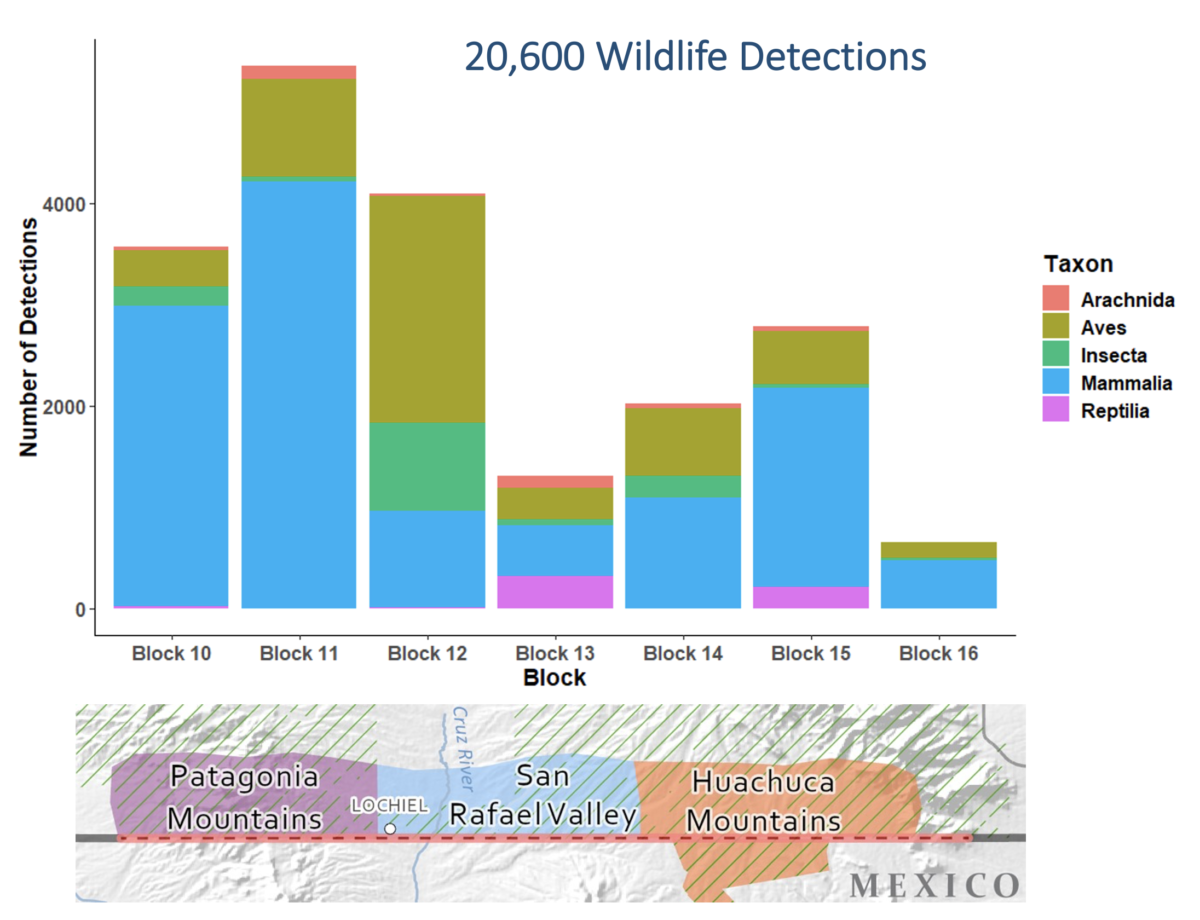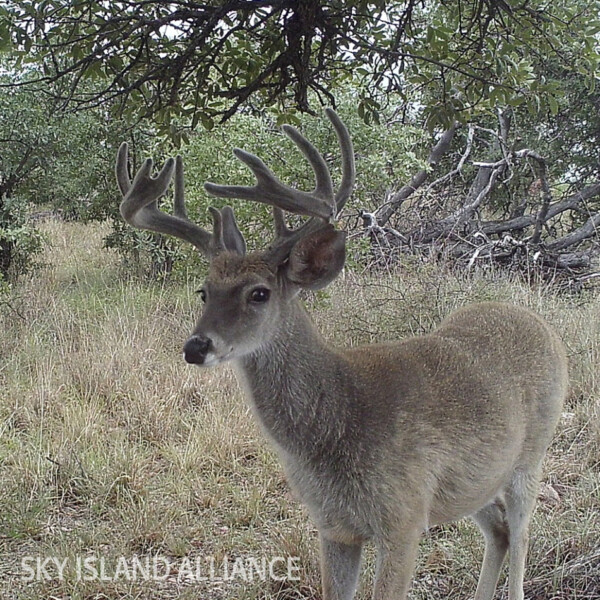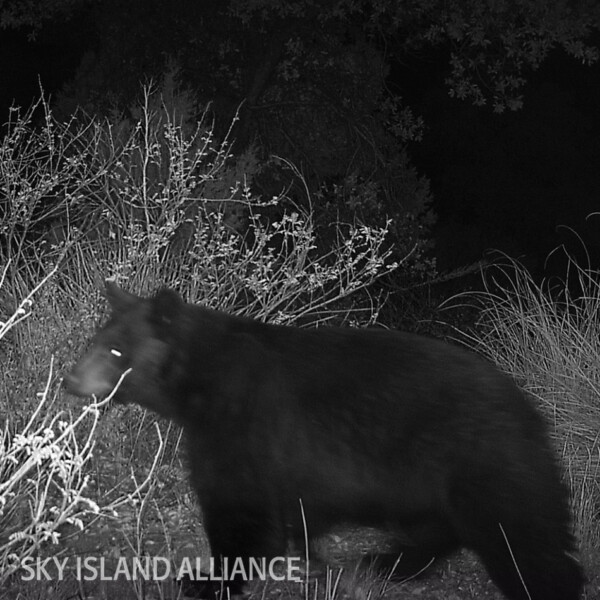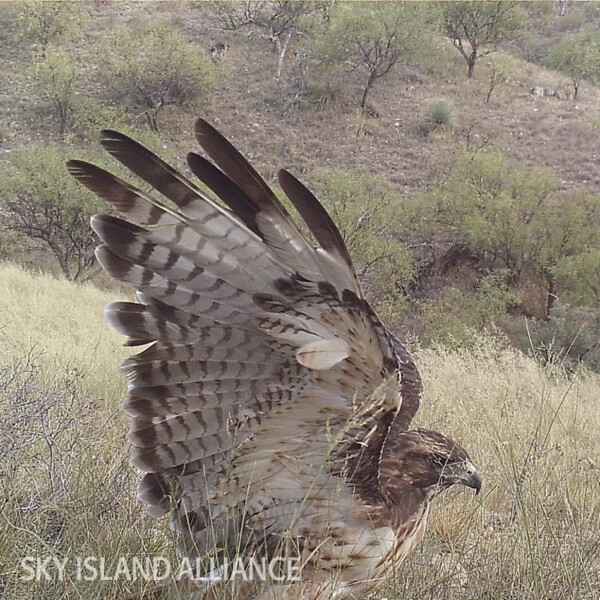The Sky Island region is home to a tremendous diversity of wildlife species in this rugged landscape where temperate and tropical species intermix. To document the true diversity of a place, one must employ a wide range of methods that each are optimized to detect a particular species or taxonomic group.
For the Border Wildlife Study, we selected trail camera monitoring as our general method to measure the diversity of medium to large mammals along the U.S.-Mexico border. However, we were amazed to find that these cameras documented much more than mammals over the last year!

The total number of wildlife detections varied across each group of Border Wildlife Study cameras, with the most animal activity observed on the eastern slopes of the Patagonia Mountains (Block 11). Stacked bars represent the quantity of detections for each taxonomic group, including spiders (Arachnida), birds (Aves), insects (Insecta), mammals (Mammalia), and reptiles (Reptilia).
During the first year of the Border Wildlife Study (March 2020 to March 2021), 20,600 wildlife images were captured by our array of cameras spanning 58 points along 30 miles of the border. The cameras took more than two million photographs during the year, so before we could clearly see the pattern of wildlife species across the landscape, our Wildlife Specialist Meagan Bethel had to first meticulously filter out the images of moving vegetation, cows, trucks, and people.
The wildlife species observed on our cameras total 109 so far, including 30 mammals and a wide variety of birds, insects, and reptiles. Where each species was detected and when reflects the unique habitat requirements and ecology of the species, so the combination of species recorded by each camera was unique to its place on the landscape.
The highest number of wildlife detections overall occurred in the Patagonia Mountains and San Rafael Valley, with the most mammal activity observed in the eastern Patagonias and the most bird activity in the San Rafael. Many factors may explain the difference in species richness and wildlife activity across the landscape, including the habitat type, presence of cattle, presence of humans, and the quality of the dark nighttime environmental.
We’ve explored the patterns in these other Border Wildlife Study variables in three subsequent blogs. Read part two on studying the border’s nighttime environments.
Watch our webinar report on the first year of the Border Wildlife Study.




